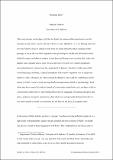Doubting John?
Abstract
This essay focuses on the figure of John the Baptist in prison and the question he sent his disciples to ask Christ: was he ‘the one who is to come’ (Matthew 11: 2–3). Having observed how the Fathers strove to distance John from the perils of doubt in their readings of this passage, it traces the way their arguments were picked up by twelfth and thirteenth-century biblical exegetes and then by authors of anti-heretical dispute texts in urban Italy, where the Baptist was a popular patron saint. So as to give force to their own counter-arguments, learned polemicists, clerical and lay, made much of heretics’ hostility to John, powerfully ventriloquizing a doubting, sceptical standpoint. One counter-argument was to assign any doubts to John’s disciples, for whose benefit he therefore sent to ask for confirmation of the means of Christ’s return, neatly moving doubt from questions of faith to epistemology. Such ideas may have seeped beyond the bounds of a university trained elite, as is perhaps visible in a fourteenth-century fresco representing John in prison engaging with anxious disciples. But place, audience and genre determined where doubt was energetically debated and where it was more usually avoided, as in sermons for the laity on the feast of a popular saint.
Citation
Andrews , F 2016 , Doubting John? in F Andrews , C Methuen & A Spicer (eds) , Doubting Christianity : The Church and Doubt . Studies in Church History , vol. 52 , Cambridge University Press , Cambridge , pp. 17-48 . https://doi.org/10.1017/stc.2015.2
Publication
Doubting Christianity
ISSN
0424-2084Type
Book item
Collections
Items in the St Andrews Research Repository are protected by copyright, with all rights reserved, unless otherwise indicated.

